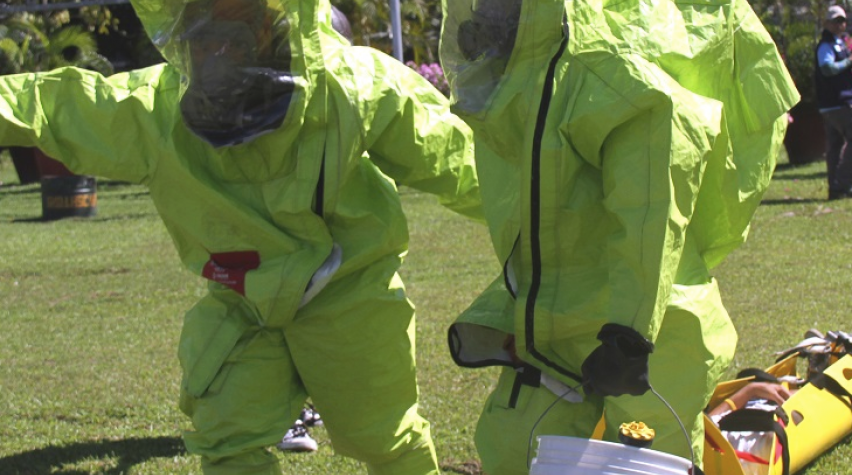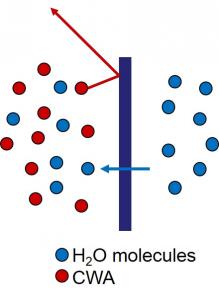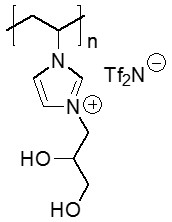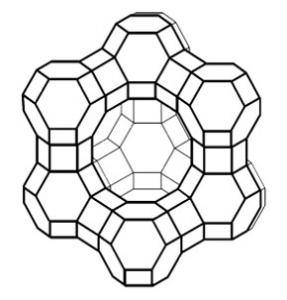

While attending the presentation on "New and Novel Materials for Membrane Separations" by Richard Noble of the University of Colorado, I was fascinated by his discussion of membrane engineering and its application to a non-traditional engineering challenge. It seems that developing these new "mixed-matrix membrane" systems can benefit our soldiers on the chemical warfare battlefield.
The problems

Anyone who has worn a HazMat suit knows that they can be hotter than the blazes. The impervious coating on the suit that protects you from the hazardous environmental conditions outside the suit also traps moisture and heat inside the suit. This can be uncomfortable for someone in industry. It can be deadly for a soldier in a hazardous battle zone. However, traditional "breathable" fabrics are not particularly adept at blocking chemical intrusions, nor can you necessarily tell whether there has been an exposure. What's more, once exposed, it's also difficult to know if surface is contaminated (and dangerous!). The challenge then is to engineer a membrane fabric that allows for adequate moisture transport without allowing hazardous agents to pass into the suit, also decontaminating the chemical warfare agent (CWA) and indicating the exposure incident as well. Oh, and it should be lightweight and easy to manufacture. A chemical engineering challenge indeed!

Perspiration transport
For the particular problem, the minimum moisture transport was specified to be 1500 grams/square meter/day. The use of room temperature ionic liquids (RTILs) with bis(trifyl)imide (Tf2N-) as the anion- and imadazolium-based diols as the cation basis for the membrane polymer were selected on their ability to deliver altered miscibility. The degree of hydrophilicity of these compounds is essentially "tuneable" based on length and nature of the carbon chain opposite the diol on the imadazole ring. This organic end can also be attached to various olefin monomers and photopolymerized to form the polymer from which the membrane is cast. Various diols and also co-monomers were tested in order to achieve the minimum moisture transport and maximum chemical barrier. Several promising candidates were discovered that achieved 0% chemical passage and well over 1500 g/sm/d moisture transport.
Chemical agent neutralizer

In order to effectively serve a soldier in a conflict, the barrier to the chemical agent needs to be 100% effective for 22 hours (DOD specification). Of course, simply being a barrier is a good start, but the ability to actually neutralize the CWA would be much better. In this research, CEES, a mono-dechlorinated form of mustard gas, was used for testing purposes. Zeolites were chosen as preliminary candidates for the decontamination agents. The specific zeolite chosen for the decontamination of CEES is the well studied zeolite X. The hydrolysis reaction produces the non-active hydroxyl version of the CEES. This reaction happens at room temperature. By using a "mixed-membrane" approach where zeolite particles are incorporated in the RTIL based polymer, both high moisture fluxes and 100% destruction of the CEES is possible, thus achieving the best of both worlds. In theory, many other unique properties could be provided by different components in the composite or mixed membrane system.
Future indications

Additional research needs to be done to identify the optimal polymer/zeolite systems from both a performance and cost/manufacturing basis. In addition, the differing nature of CWAs that may be encountered will challenge the nature of the mixed-matrix membrane components. For more information about this and other new membrane research being conducted at the University of Colorado contact Dr. Richard D. Noble.


